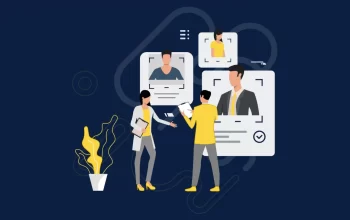COVID-19 has ceased the world’s progress for a much bigger span. It is transforming the way we live our lives. Work as we know it is undergoing a transformation. Organizations must rely on technology more than ever to be the bridge for communication, employee engagement, and use visibility as more people telecommute.
Read the blog post to know why it is important to learn about digital adoption and what is it actually?
So, before we start, let’s know about what is digital adoption? It is the concept that is transforming lives and businesses all over the globe. Experts are on continuous research searching for more ways of digital adoption.
When users achieve digital adoption, they not only understand basic software capabilities, but they also maximize the potential of sophisticated features to unlock creative new ideas and processes. Keeping fingers on the pulse of technology, one can easily figure out the best ways to transform digital era into the most prospective ones.
The sudden shift of the work from home has shattered the normal course of the work. It is hence here when the expert professionals are looking for the best alternatives that help in managing the workspace and other efforts. Digital adoption, when done correctly, has far-reaching corporate implications.
There are multiple projects, on the other hand, might produce workplace strife and, if not well managed, will fail. Email is the usual method of sharing information, however slack is also frequently used in many businesses. However, those forms of communication necessitate the user using a different programme, are difficult to track, and it is uncertain whether all employees receive and read crucial information.
A digital adoption platform engages users in a proactive manner to teach them new concepts and assist them when they are in need. Whatfix and its Digital Adoption Platform uses contextual awareness to preemptively trigger helpful material depending on users’ behaviour and to offer helpful tips when mistakes are made.
Without jeopardizing business continuity, organizations may reliably launch new software or make modifications to current systems. Companies can determine where their workflows are failing by collecting important data about user engagement on websites, business applications, and desktops.
However, successful adoption of digital tools has far-reaching implications for the entire organization. Change management focuses mostly on a shift in mindset and approach, but digital adoption necessitates reorganizing internal systems to facilitate successful disruption.
They can then make the necessary changes and tailor solutions for both staff and customers. With in-app guidance and summarized learning, a digital adoption platform streamlines the onboarding process. Digital adoption makes plans clear for technology leaders by inspiring them to indulge in bigger projects.
It doesn’t matter if you have the best technology money can buy if your employees and customers can’t use it properly. For this reason, creating, implementing, and maintaining a digital adoption plan is crucial. Increased ROI for the technology your firm produced or bought is one of the most evident benefits of digital adoption.
- Internal efficiency
- Improvement of workflows
- Increase in Productivity
- Customer-employee happiness leads to bigger trends in technology
- Results in lesser user irritation with technology
We must continue to educate customers after onboarding because digital adoption is a continuous process, especially when there are new product releases or updates. The digital transformation process encompasses much more than the simple adoption of new technologies.
Traditional software and digital process training cannot keep up with the rapid pace of technological change. Continuous training is the main key feature for digital adoption and its whereabouts. There are certain issues that are addressed by digital adoption managers, who drive adoption and track results.
Job duties for a digital adoption manager may differ from company to company because this is a relatively new position in many firms. In the modern workplace, digital adoption means being able to fully utilize tools such as computer programmes, applications, websites, software, and so on.
Managers may track how new employees use and interact with training walkthroughs using analytics. If there are any obvious gaps or low usage points, information is gathered, and steps are taken to avoid hazards and create clearer directions. The technology developers are empowering associates with the digital adoption platforms with a greater experience.




